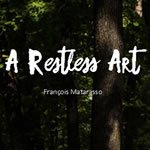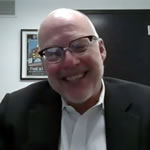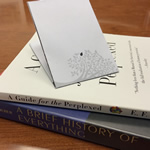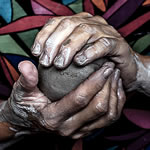When we talk about organizations, or other forms of collective action by groups of people, we often speak as if we have dominantly conscious control. We talk about designing the business, developing the policies, arranging the office, and building relationships. In short, we talk like architects or construction workers — agents with autonomy, attention, and […]
The five actions of art-making
The recent book, A Restless Art: How participation won and why it matters, offers a beautiful balance between theory and practice, abstract and concrete. The author, François Matarasso, brings decades of reflection and action to this exploration of participatory or community art. And that combination brings deep value to so many conversations about art making, […]
Mark Nerenhausen on Curating Outcomes
For a second video interview for my Presenting the Performing Arts class at American University, I talked with Mark Nerenhausen, President/CEO of Hennepin Theatre Trust in Minneapolis. While my previous conversation with Pamela Tatge focused on the art and practice of artistic curating, Mark shared the many moving parts in animating and activating a building […]
The Complexity Fetish
Nonprofit Quarterly has a thoughtful overview of complexity and sensemaking as they relate to organizations, the first of a four-part series on the subject. The general idea is that purpose-driven collectives, such as civil-sector organizations like nonprofits, need to respond to an increasingly complex world by becoming increasingly complex themselves — in how they see, interpret, discuss, and act in the world.
Paying attention
The New York Times apparently wants us all to be more productive, since it’s hammering away at the subject from many fronts.
Pamela Tatge on Curatorial Practice
In support of this semester’s “Presenting the Performing Arts” course at American University, I’ve started a series of video interviews with performing arts professionals. Through my prep for the class, I found strikingly few resources available in any media about the craft, practice, and management of arts organizations in the live performing arts (beyond the […]
Exploring the Four Stories
For over a year now, I’ve been stewing on and adapting the independent work of E.F. Schumacher and Ken Wilber (citations below), both of whom explore and explain what a “whole” view of ourselves and our world might look like. As I’ve unfolded it (literally) for a few groups and close colleagues, it now seems useful to unfold it for all of you for your reactions.
Private, public, plural
In the U.S. we’ve agreed to disagree about what to call that “other” sector of collective action that isn’t private (aka, privately owned business) and isn’t public (aka, government). Non-profit, not-for-profit, third, social, civil, voluntary all capture bits of it, but miss important bits as well. Which is why I’m increasingly fond of Henry Mintzberg’s […]
15 Years Ago
This week marks the 15th anniversary of the launch of The Artful Manager blog, brought to life through the invitation and innovative brilliance of ArtsJournal editor Doug McLennan, and my own growing curiosities at the intersection of art and management and collective action.
Strong opinions, weakly held
The yelling and pointing in our current civic environment keeps me going back to futurist Paul Saffo and his mantra: “strong opinions, weakly held.” In his extensive work exploring the present and divining the future, he found this combination to be a productive path toward more robust thinking.











